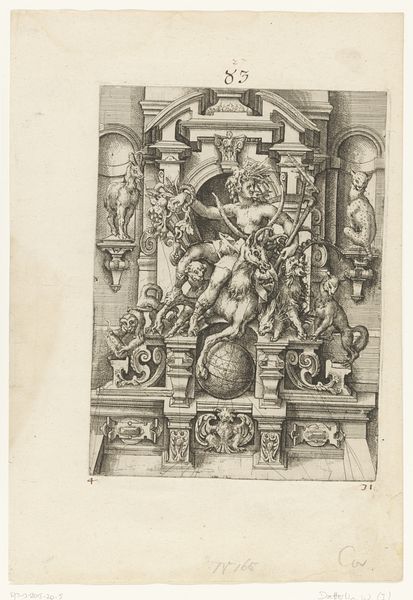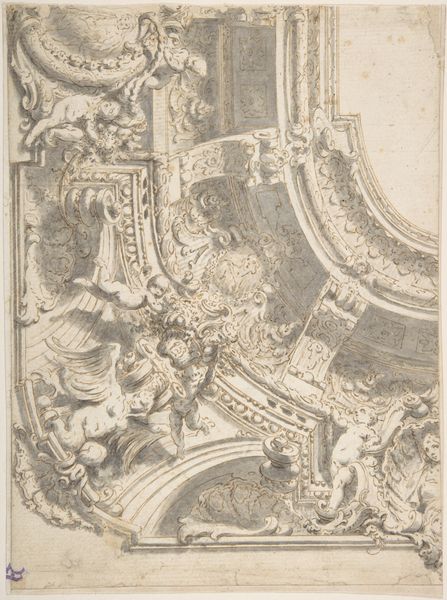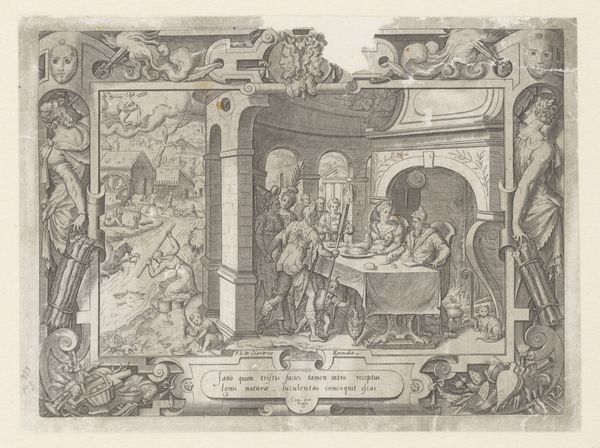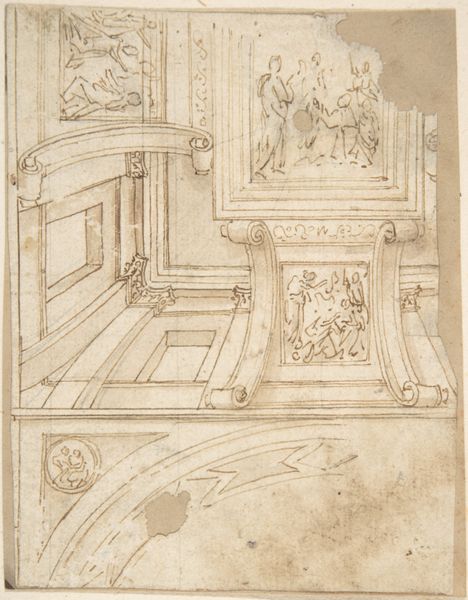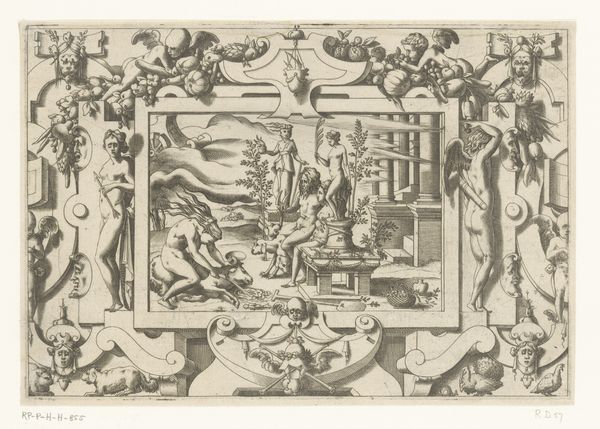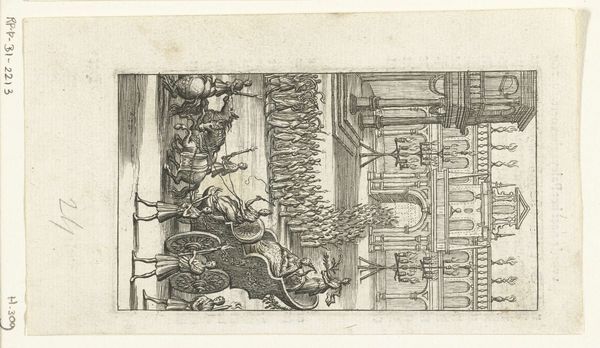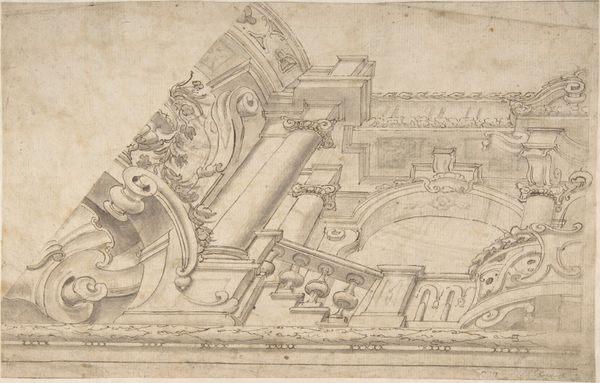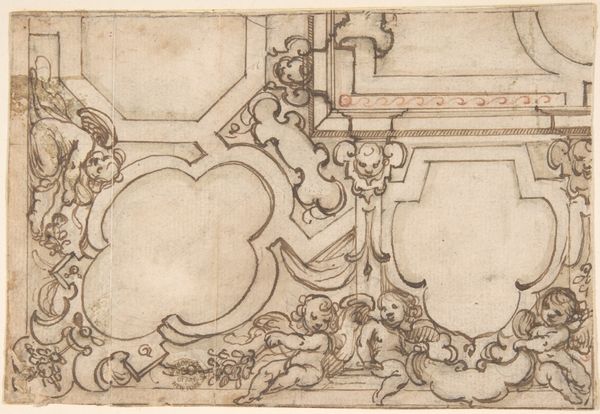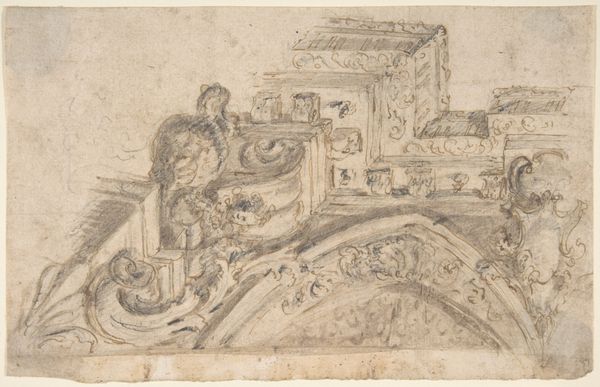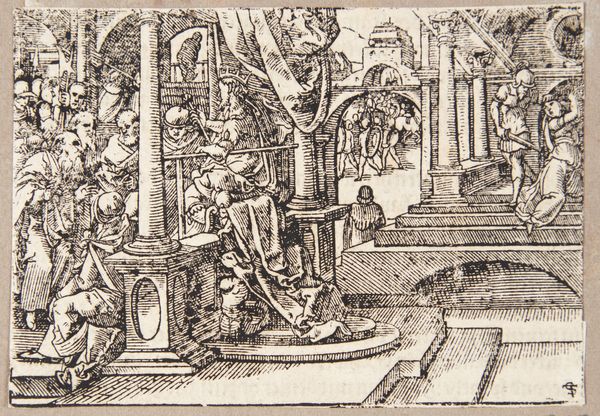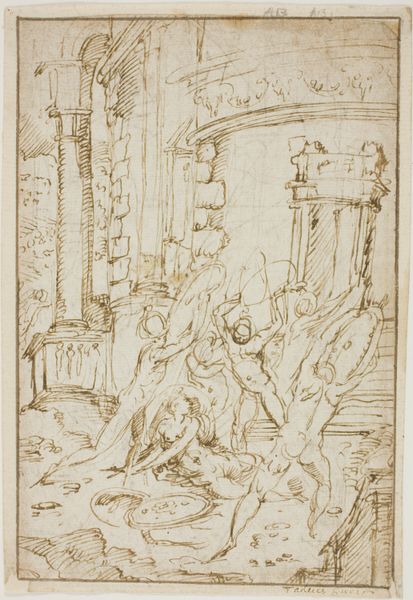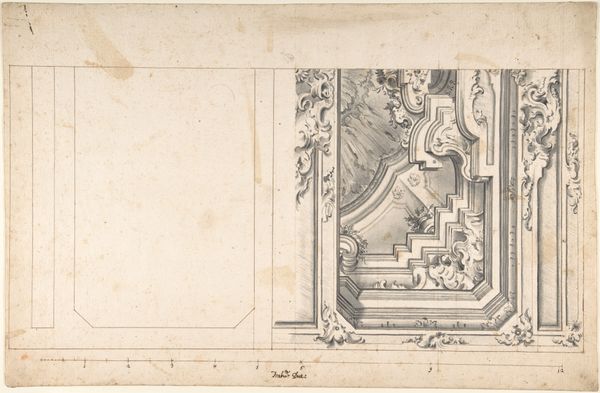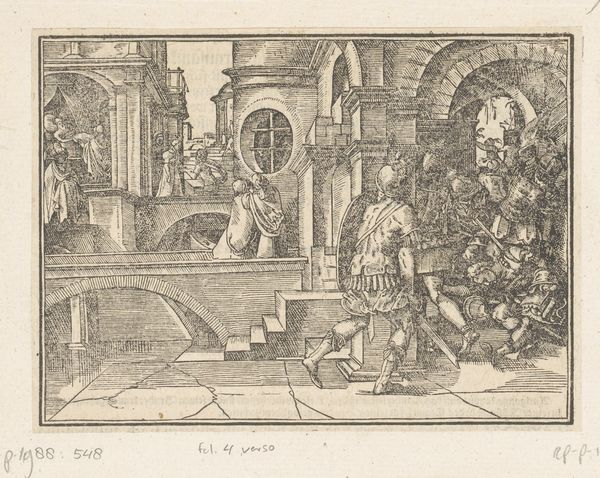
Design for a Quarter of a Trompe L'Oeil Ceiling with Architecture in the Ionic Order and a Statue of Victory 1710 - 1740
0:00
0:00
drawing, architecture
#
drawing
#
baroque
#
geometric
#
history-painting
#
architecture
Dimensions: sheet: 8 3/8 x 8 7/8 in. (21.3 x 22.5 cm)
Copyright: Public Domain
Curator: This drawing, "Design for a Quarter of a Trompe L'Oeil Ceiling with Architecture in the Ionic Order and a Statue of Victory" by Vittorio Maria Bigari, dates from 1710 to 1740. What are your initial thoughts? Editor: The illusion of depth is so compelling, despite it only being a wash drawing. It feels weighty. You can practically feel the texture of the stonework and the cool of the shadows. Curator: Indeed, Bigari was clearly skilled in architectural rendering. Notice how the Victory statue appears to break through the picture plane. Triumphant! It really embodies the Baroque aesthetic. The Ionic order points to its inspiration within a historical tradition, a connection with concepts of enduring ideals. Editor: Absolutely, and I'm struck by the *labor* involved. Just imagine the scaffolding, the sheer physical effort of transferring this design onto a ceiling at this scale. It also prompts me to think about the role of design and the skilled artisan during the period—it wasn’t solely about high art. Curator: That's an insightful observation. And consider the allegorical implications: Victory suggests triumph, the Ionic order represents the structure of civilization, all merging together, presented in a visual language, designed to impress and elevate. The purpose of trompe l'oeil is deception but with an uplifting and moral aspiration, to provide hope to those living in this era. Editor: Right, it speaks volumes about patronage and the construction of power in 18th-century Europe. We tend to place value in the finished "art", not necessarily what processes, workshops, the movement of materials, even potentially the exploitation of labour may have contributed. And it begs the question: how many preliminary drawings are lost to us? Curator: A powerful point. Each visual detail can lead us to many interconnected narratives about how images functioned, carrying so much meaning. Editor: For me, it is an intriguing visual and a complex piece of material culture that makes me consider the production line, that, at the very least, may be more meaningful. Curator: Seeing through the lens of iconography has further highlighted, for me, how powerful visual symbols remain rooted through time. Editor: This reminds me how a simple material, transformed, creates illusions and holds meanings across centuries.
Comments
No comments
Be the first to comment and join the conversation on the ultimate creative platform.
